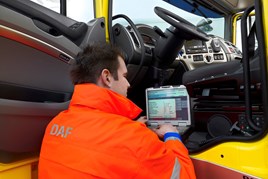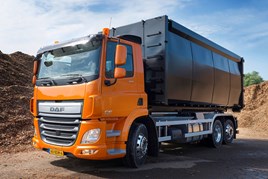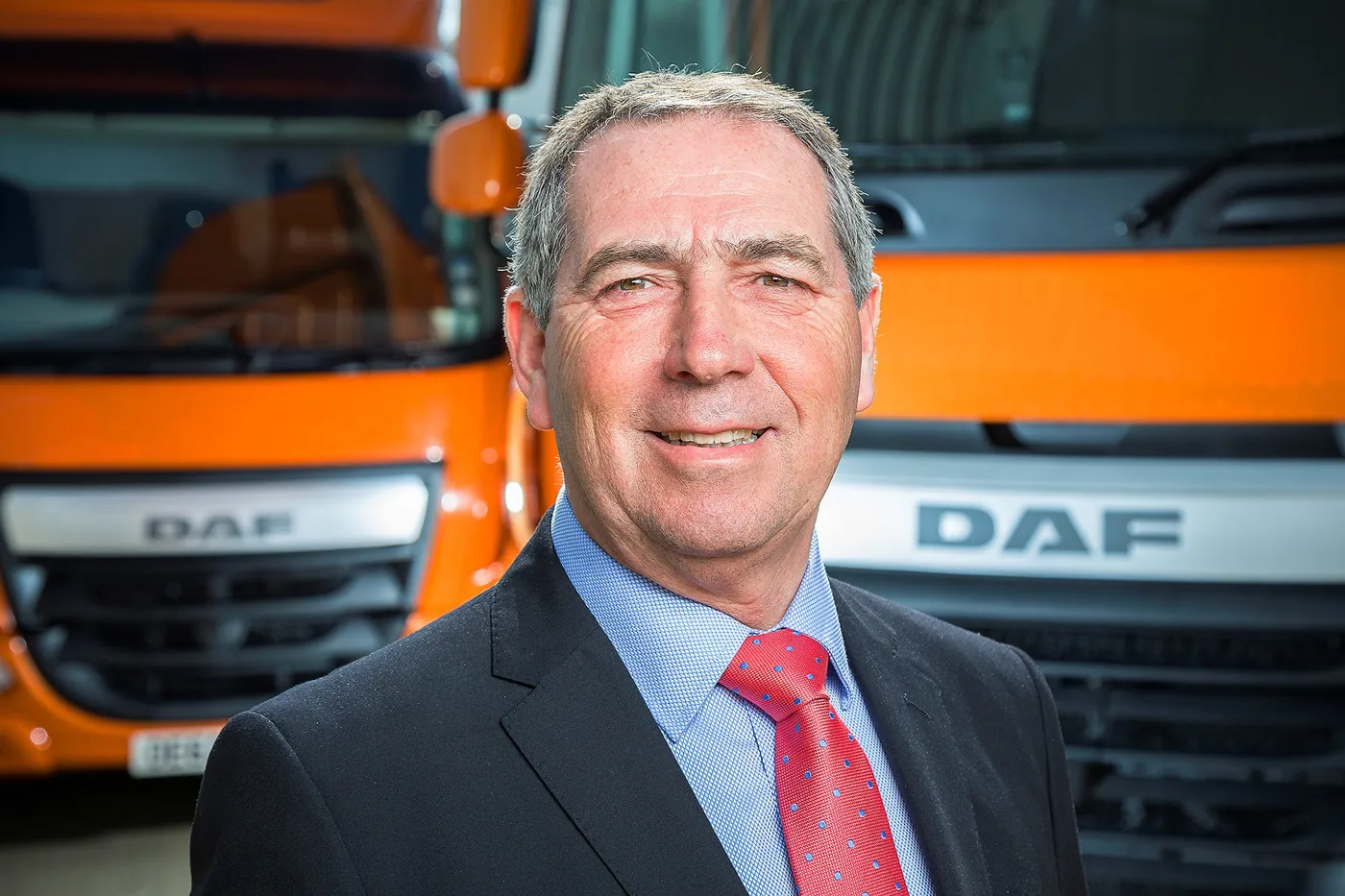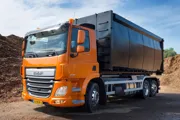Fleet customers tend to be a conservative bunch when it comes to their choice of vehicles. Nowhere is this more prominent than in cars, where Ford has been the market leader for the past 38 years, and vans, where it has held the top spot since 1965.
In trucks it is no different. DAF Trucks took the top spot 20 years ago and has remained the clear market leader ever since. But while its share of the six-tonne-plus truck sector has remained consistently around the 26-30% mark, its volumes have shrunk in line with the overall market decline.
This year, the truck market will total around 42,000 units compared to its historic norm of 50,000. DAF will sell around 12,000 units – 6,000 LFs, 3,000 CFs and 3,000 XFs.
Today’s sales environment can be traced back to the 2008 recession.
DAF Trucks factfile
Managing director: Ray Ashworth
Time in current role: Six years
Models: LF, CF, XF
Annual sales: 8,616 (2014) , down 38%
Market share: 24.85% (2014)
Sales 2015: (Jan-April) 3,215, up 100%
Market share 2015: (Jan-April) 26.72%
“Everyone looked at how they ran trucks,” explains DAF managing director Ray Ashworth, who joined the company 46 years ago as an apprentice at Leyland.
“They are now running them for longer. The LF average was five years; now it’s towards six. So we have lost that year of sales.”
The majority of DAF’s sales go to a few very large fleets, think the likes of Royal Mail and DHL, with the rest spread around smaller operators. Consequently DAF’s customer base is relatively small, which means it can build some very strong relationships – it estimates around 1,000 people are responsible for making purchase decisions on all its trucks.
“It makes this business a very personal one,” says Ashworth. “DAF’s strength comes from the strength of the relationships we have built up.”
Improved truck reliability makes it harder to stand out
The focus on relationships and customer service has been intensified by improvements in truck reliability and product quality which make it harder to differentiate between competitors’ models. Service has become the key deciding factor.
DAF’s management team has remained unchanged for the past 20 years, while much of its 130-strong dealer network is similarly long-standing. They are playing an increasingly vital role in the management of truck fleets as a growing number of operators dispense with the services of fleet engineers.
“The nuances of smaller trucks are more complex than with tractor and trailers,” says Ashworth. “There is an infinite number of variables that make a vehicle specific to an individual customer’s needs. They need advice – there is a lot of regulation.”
Larger operators generally employ a fleet engineer; smaller companies rely more on more on DAF’s expertise for advice and guidance.
“Back 10 or 20 years, smaller companies had a fleet engineer. That’s now reducing; the number of fleet engineers is reducing,” says Ashworth.
Size is not the only influence; complexity of vehicle and funding method also determine whether a company employs a fleet specialist. Around one-third of trucks are sold on contract hire or lease rental, although the proportion for DAF is higher with many funded via its own finance company.
Leasing tends to be the preserve of larger fleets which base their decisions on whether they want their money tied up in assets and whether they want assets on the balance sheet which impacts on their gearing.
More truck fleets seek contracts with built-in maintenance
A growing number of contracts now include maintenance as truck fleets seek predictable monthly costs. Around half of leases sold by DAF’s finance company include repair and maintenance, which has doubled over the past decade. Each of these trucks will be fitted with Microlise telematics which feeds key diagnostics data back to DAF, enabling it to predict potential failures and take a proactive approach to keeping trucks on the road.
 “The payback for the customer is it lowers costs overall so we can reduce our charge-out costs,” adds Ashworth.
“The payback for the customer is it lowers costs overall so we can reduce our charge-out costs,” adds Ashworth.
The telematics units also provide fuel usage data, helping fleets to address consumption issues – vital when 7.5-tonne trucks average 19-20mpg and 44-tonners 9-10mpg.
Fuel has been thrown into sharp focus with the move to Euro 6, which came into force for all new trucks in January 2014. A number of operators have reported a rise in fuel consumption, while higher truck prices led to a late 2013 stampede for the cheaper Euro 5 trucks.
“Because a lot of our fleet customers had the budget they pre-bought trucks in 2013 because we had derogation ,” Ashworth says. “When the on-cost of Euro 6 is 10-15%, bringing forward acquisitions saved them millions of pounds.”
“We will be back to overall 28% market share this year”
Ray Ashworth, managing director, DAF Trucks
Consequently, DAF’s 2014 performance, which showed a 38% decline in registrations for a 25% market share, was skewed because of Q4 2013.
“We will be back to overall 28% market share this year,” Ashworth says – registrations are already up 100% in the first four months of the year. “Our order take is strong; we are almost at a position of taking as many orders by mid-year as we took all of last year. Confidence is high; people are generally ok with the election result and are carrying on business as usual.”
And on fleets’ Euro 6 fuel concerns, he says: “Reducing NOx and particulates can reduce the efficiency of the engine, so you burn more fuel and produce more CO2. It was a challenge for all manufacturers. We have reduced NOx but seen a 3-5% rise in fuel economy which operators didn’t expect.”
Commercial fleets 'are opting for larger vehicles'
Ashworth has identified a clear trend in recent years for fleet operators to move up the weight range. This has been driven by legislation, which has added a lot of weight to trucks. In order to maximise carrying capacity, fleets are opting for larger vehicles.
However, legislation is increasingly targeting the smaller truck.
“Take, for example, 7.5-tonne licences,” says Ashworth. “Anyone passing their car driving test before 1997 can drive vehicles up to 7.5-tonnes (the C1 entitlement) but now they have to complete 35 hours of Driver CPC training to do it professionally.
“Fleets are saying that if we have to do all this for 7.5 tonnes, we might as well do it for 12 tonnes,” Ashworth explains.
Despite the move towards larger vehicles, 7.5-tonne trucks still account for 70% of the six- to 16-tonne sector, which is where DAF is at its strongest with 35-40% of the market (above 16 tonnes it takes 25%).
“Operator feedback can drive development, especially safety”
Ray Ashworth, managing director, DAF Trucks
Legislation is the biggest influencer of truck development. While the move to Euro 6 had the most significant impact in recent years, safety is the next area under the microscope, starting in November when lane departure warning systems and advanced emergency braking become a requirement for all new trucks.
The braking regulations are at two levels: level 1 (November 2015) covers M3, N3 and N2 above eight tonnes with initial pass-fail limits; level 2 (November 2018) adds M2 and N2 up to eight tonnes with tighter pass/fail limits. DAF has elected to meet both levels from this November.
“We work closely with our customers to understand their specific needs,” says Ashworth. “DHL, for example, has very high safety requirements and we can take these and roll out across our trucks. Operator feedback can drive our development, especially in safety areas.”
DAF Aid: emergency service for trucks
Imagine the scene: one of your trucks has suffered a roadside breakdown. As you wait for the truck to be towed to a service specialist, you contemplate the potential cost which could run into thousands of pounds due to missed deliveries and possibly the loss of some tenders.
 It’s a crisis – and DAF agrees. That’s why it treats roadside breakdowns like an emergency.
It’s a crisis – and DAF agrees. That’s why it treats roadside breakdowns like an emergency.
DAF Aid means any breakdown is made a priority by the dealer network – the company likens it to and A&E department.
“Workshop staff will down tools on their scheduled jobs and make the breakdown their first priority,” says marketing manager Phil Moon. “There is obviously a consequence to doing that but customers understand that it’s ‘needs-must’ and our response to a breakdown is paramount.”
On average, a van will be on the scene between 43 and 46 minutes and the truck will be back on the road within 96 minutes. 80% of breakdowns are fixed at the roadside.
Every breakdown is analysed to help DAF prevent future incidents. It also enables the company to advise dealers on the tools and parts its vans should be carrying and to ensure their technicians are fully trained for diagnosis and remedial repairs.
“We are starting to predict them by looking at historical and seasonal trends,” Moon says. “When trucks deliver to such strict timings, it is right that we treat every breakdown as an emergency.”
DAF Trucks' USP: Building bodies and chassis
Ray Ashworth believes one of DAF’s unique selling points is the fact it builds bodies as well as chassis.
 His logic behind this approach is faultless: “Why would you take the expense of me building a product that you can’t use to deliver to someone else to build a body on the back that isn’t designed specifically for my truck?”
His logic behind this approach is faultless: “Why would you take the expense of me building a product that you can’t use to deliver to someone else to build a body on the back that isn’t designed specifically for my truck?”
Ashworth points to a number of benefits. First, the chassis and body can be completed at the same time, which means the complete 7.5-tonne truck can be delivered in the same timeframe – typically 10 weeks – as a chassis cab.
“If you take the cab to a bodybuilder it could add five to six weeks,” he says.
Second, if something goes wrong there is no quibbling over fault: DAF provides a full vehicle warranty. Third, the body is designed by DAF, for a DAF, so it has integral interfaces and it is fully tested.
DAF started building bodies five years ago and will do around 1,000 complete 7.5-tonne trucks this year – one-sixth of its total sales. So far it is limited to boxes and curtainsiders which are the biggest sellers. Tippers aren’t ruled out, but aren’t imminent due to the small volumes.
Ashworth admits that sales have been slow to build. “We are trying to change the culture of 75 years of buying trucks,” he explains. “But if you are a volume buyer, I can guarantee that the first and 200th body will be the same.”

























Login to comment
Comments
No comments have been made yet.